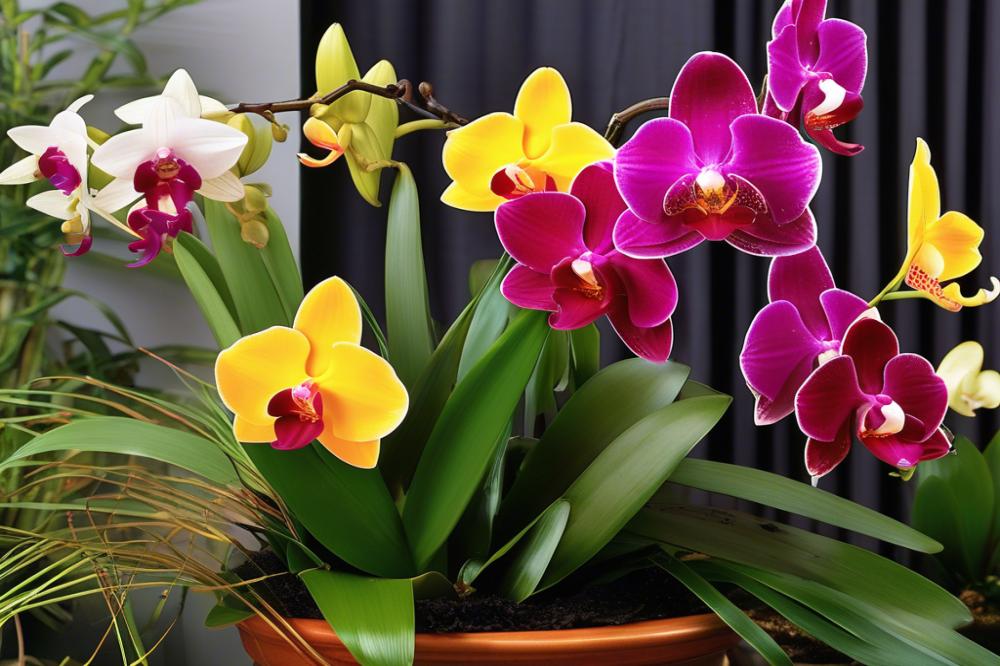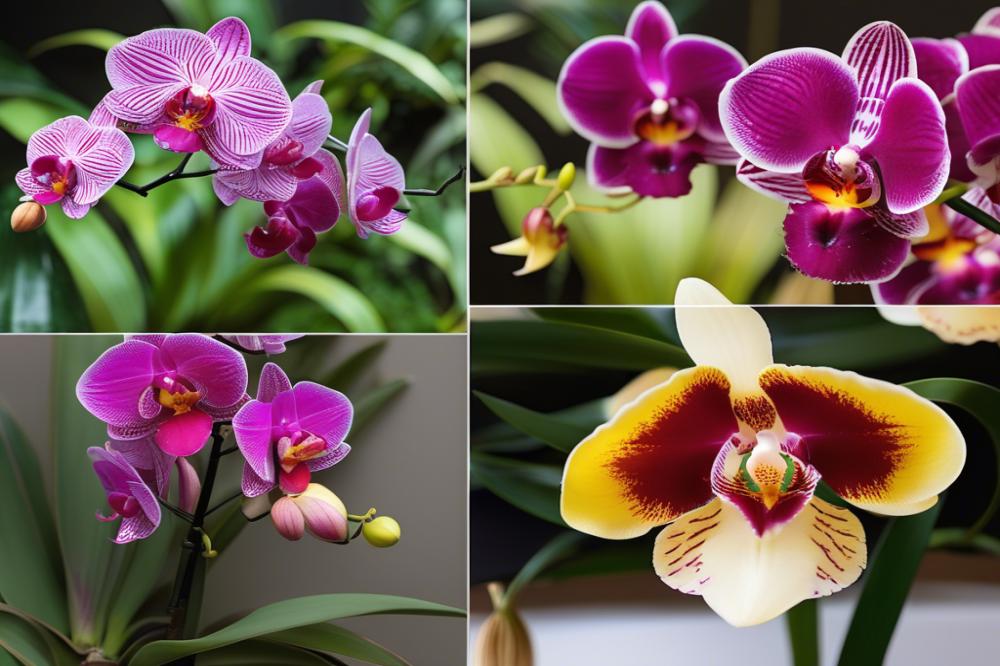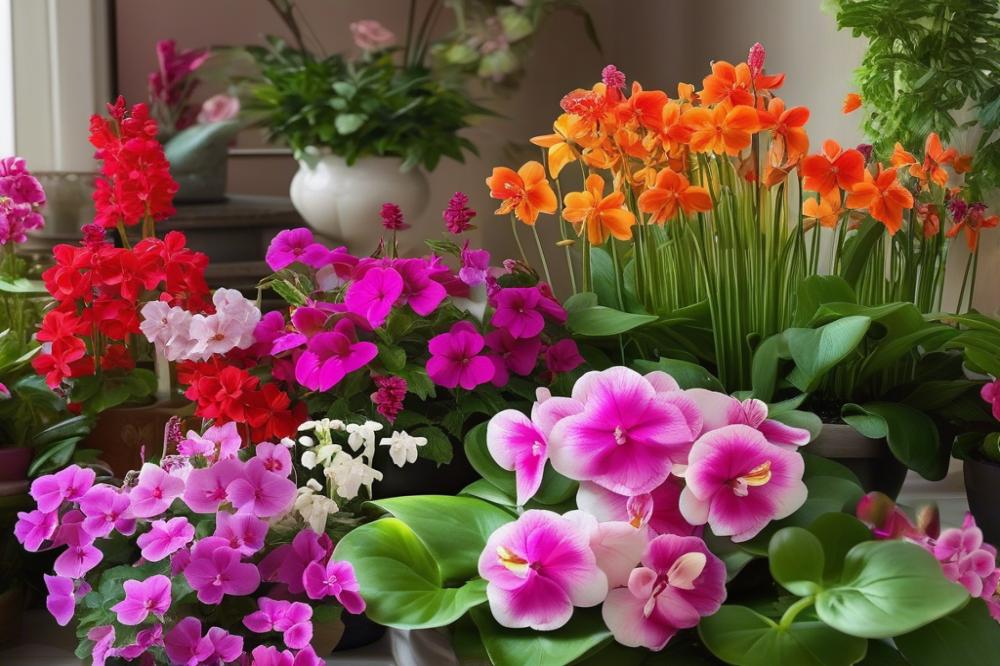How to Encourage Orchids to Rebloom
Orchid enthusiasts often share a common goal: getting their beloved plants to bloom again. There is something magical about watching these elegant flowers reappear after a dormant phase. For many, the thrill of nurturing these unique species comes from the challenge of ensuring they thrive and show off their beauty through blooming. Successfully coaxing an orchid into reblooming can bring immense satisfaction, especially after dedicated care.
However, reblooming orchids can present several challenges. Factors such as light conditions and humidity play pivotal roles in the health of the plant. Too little sunlight can hinder flower spikes from developing, while excess light can scorch leaves. Proper orchid potting also influences success, with the right mix of materials to promote drainage. Many growers struggle with these elements, often leading to frustration. Additionally, understanding when to prune and how frequently to water can confuse even the most seasoned hobbyists.
Key aspects that promote successful flowering include temperature management, adequate fertilization, and keeping the plant in the ideal environment. Each orchid species may demand different conditions, complicating the task for caretakers. Repotting is another consideration. A well-timed repot can refresh the plant, providing new nutrients and space for roots to expand. With careful attention to each of these factors, orchid care becomes a rewarding journey of patience and learning.
Understanding Orchid Lifecycles


Orchids have distinct growth phases that are vital to their health and blooming schedule. They generally experience three main phases: growth, dormancy, and blooming. During the growth phase, orchids develop roots, leaves, and new flower spikes. This is the time when they need proper orchid potting, optimal light conditions, and adequate watering. Consistent levels of humidity also play a critical role in helping these plants flourish.
Acknowledging the dormant phase is crucial for those who hope to see their orchids rebloom. When an orchid enters dormancy, it often appears lifeless. This phase can last several weeks or even months. However, this resting period does not mean the plant is unhealthy. In fact, dormancy is a natural part of their lifecycle, allowing the orchid to conserve energy for the next blooming cycle.
How you care for your orchid during dormancy makes all the difference. Pruning dead or wilted flower spikes encourages new growth. Light conditions should be reduced, matching the plant’s needs during this resting period. Fertilization should be minimal, as the plant requires less nourishment when not actively growing. Watering must also be adjusted; overwatering can lead to root rot at this stage. A cooler temperature might help replicate natural seasonal changes. Understanding these factors will significantly affect an orchid’s ability to produce flowers again.
Repotting can be beneficial as well, especially if the growing medium has started to break down. It’s important to handle the roots carefully. When the dormant phase ends, watch for signs of new growth. The shift from dormancy to blooming requires patience and a keen eye. With proper care during this crucial time, your orchid can potentially reward you with stunning flowers once more.
Optimal Light Conditions


Light plays a crucial role in photosynthesis, the process that helps plants convert light energy into food. Without adequate light, orchids struggle to thrive and bloom. Different types of orchids require varying light levels to flourish. Understanding these needs is essential for anyone seeking to promote blooming in their plants.
Cattleya orchids prefer bright, indirect sunlight, while Phalaenopsis, often known as the moth orchid, thrives in moderate light conditions. On the other hand, Dendrobiums can handle more intense light but still need protection from direct sun. Knowing the specific light requirements of your orchid type is vital for optimal growth.
Adjusting light conditions can vastly improve chances of flower spikes developing. If an orchid is not receiving enough light, consider moving it closer to a window or using supplemental grow lights. During the dormant phase, however, reducing light exposure can mimic natural seasonal changes, helping the plant prepare for the next blooming cycle.
Humidity also plays a key role in how well orchids respond to light. Ideally, maintaining 50-70% humidity levels complements good lighting, promoting a healthy environment. A constant temperature also aids in this process. Avoid placing orchids near temperature extremes from drafts or direct heat sources.
Regular pruning removes old flower spikes, which encourages new growth. After repotting, flowers may take time to reappear, as the plant reallocates energy towards root establishment and overall health. Fertilization should be balanced throughout the growing period to sustain energy levels. Adjustments to watering patterns based on seasonal changes will also help the plant soak up the light more effectively.
Humidity and Temperature Requirements


Importance of Humidity for Orchid Health
Maintaining proper humidity is crucial for the well-being of orchids. These plants thrive in environments with high moisture levels, as they are naturally found in tropical regions. When humidity is too low, orchids can suffer from stress. This leads to wilting leaves and poor growth. A stable humidity level also encourages healthy root development. Sufficient moisture promotes the blooming process, enabling vibrant flowers.
Optimal Humidity Levels and Methods to Maintain Them
Orchids generally prefer humidity levels between 40% and 70%. Keeping your home within this range may require some effort. One effective method is to group your orchids together. This creates a microclimate that retains moisture around them. Another option is to employ humidity trays. Fill shallow trays with water and pebbles to elevate humidity. Placing orchids on these trays helps create an appropriate environment.
Misting your plants is another strategy, but it should be done carefully. Over-misting can lead to fungal issues. Make sure to target the air around the orchids rather than soaking the leaves. In certain conditions, a humidifier can be a valuable tool. Set it near your plants to maintain the necessary moisture levels.
The Impact of Temperature on Flower Spikes and Reblooming
Temperature is another critical factor when it comes to caring for orchids. Most varieties like daytime temperatures between 70°F and 80°F. Nighttime temperatures should be a bit cooler, ideally between 60°F and 65°F. This temperature drop is essential for stimulating flower spikes. Orchids need a change in temperature to encourage the blooming process.
During the dormant phase, keep an eye on temperatures. Many growers mistakenly think orchids do not require attention during this time. In reality, they need a stable environment to prepare for their next blooming cycle. Notably, extreme temperatures can hinder growth and reblooming. Avoid placing orchids near drafts or direct heat sources.
When considering potting and repotting, remember that the environment affects temperature and humidity alike. New potting materials can impact moisture retention. Thus, it’s wise to pick potting mixes that support humidity needs. Pruning spent flower spikes can also help focus the plant’s energy on new growth. Fertilization should be adjusted based on seasonal changes as well. All these factors combined can remarkably boost your chances of seeing healthy orchids rebloom.
Watering Practices


Proper watering techniques play a crucial role in encouraging your orchids to rebloom. Orchids have specific needs, making it essential to understand how and when to water them. The right amount of moisture helps the plant thrive, especially during its growing period.
Overwatering can be just as harmful as underwatering. Signs of overwatering include yellowing leaves and root rot. If roots appear dark and mushy, it’s a clear indication that water is accumulating in your orchid potting mix. On the other hand, underwatering produces shriveled leaves and wilting flowers. Always check the roots; healthy roots should be firm and green. Distinguishing between these conditions is vital for the health of your plant.
Creating a watering schedule is beneficial for your orchids. Consider a weekly routine, but adjust it based on the season. During warmer months, when temperatures rise, your plant may require more frequent watering. In contrast, during the dormant phase, you can reduce the frequency. Monitor the humidity levels in your space. High humidity can allow you to space out watering a bit more.
Don’t forget to incorporate light conditions and temperature when planning your schedule. If your orchids receive bright, indirect light, their water needs may differ from those that are in shadier spots. Additionally, the cooler the environment, the less water your orchids will require. Over time, specific care routines will help you develop an instinct for your plants’ needs.
Pruning flower spikes after blooms fade also aids in nurturing new growth. While watering is important, remember that fertilization and humidity also play roles in orchid health. It’s about striking the right balance across the conditions your orchids experience. By managing these basic watering practices, you set the stage for your orchids to flourish and potentially rebloom.
Fertilization Techniques
Nutrients play a crucial role in the health of orchids. For these beautiful plants, a well-balanced diet is essential for encouraging reblooming. Without proper fertilization, orchids may struggle to produce new growth or flower spikes.
Recommended Fertilizers
Choosing the right fertilizer is key. Many orchid enthusiasts prefer liquid fertilizers designed specifically for orchids. These formulas often contain a mix of nitrogen, phosphorus, and potassium. Look for products labeled as 30-10-10 or 20-20-20, as they can provide a balanced nutritional profile. Applying fertilizer every two to four weeks during the growing season works well for most orchids. When watering, remember that diluting the fertilizer in water can prevent root burn.
Timing for Fertilization
Timing is everything when it comes to orchid care. Begin fertilizing in spring, as the plant exits its dormant phase and starts to thrive again. This is when flower spikes begin to appear, and they need nutrients to grow healthy and strong. After blooming, adjust the schedule based on the orchid’s needs. Some may require continued feeding, while others can benefit from a brief pause.
Ideal light conditions and humidity also influence nutrient absorption. Placing orchids in bright, indirect sunlight often aids in stimulating growth. Too much direct sunlight can harm the leaves, while too little makes blooming difficult. Maintaining high humidity around orchids can enhance vital processes, making fertilization even more effective.
Other Factors
Temperature affects the entire growth cycle. During colder months, some plants may enter a dormant phase, which means less frequent fertilization is necessary. However, when temperatures rise, it’s time to ramp up feeding to support healthy development. Refrain from fertilizing as the plant starts to drop leaves or flowers; this could stress the orchid.
Pruning spent blooms can also play a part in encouraging new ones. By cutting back dead spikes, you can direct energy into producing new growth. Repotting should occur every year or two to refresh the medium, ensuring roots receive the best oxygen and nutrients.
Watering practices should complement your fertilization routine. Always water thoroughly before applying fertilizer to avoid damaging the roots. Even the most dedicated orchid owners can find trouble balancing these various factors. Staying attentive to the plants’ responses will lead to better care and more blooms in the future.
Orchid Potting and Repotting
Proper potting plays a crucial role in the health of orchids. When the roots have a suitable environment, they can thrive. Healthier roots can lead to more vibrant blooms over time. A pot that is too small can restrict growth. Conversely, a pot that is too large can lead to excess moisture, which is harmful.
Selecting the Right Potting Mix and Pot Size
Choosing the right mix is essential. Orchids generally prefer a bark-based medium. Many growers suggest using a combination of fir bark, perlite, and charcoal. This blend provides drainage and airflow, contributing to root health. While selecting a pot, remember that orchids have unique root structures. A wider pot allows for stability, but depth will depend on the species.
When and How to Repot to Encourage Reblooming
Repotting is often necessary every one to two years. Roots can become crowded, preventing growth and flower spikes. An ideal time to repot is after blooming or during the dormant phase. During this period, the plant can recover from the stress of repotting. Start by removing the orchid from its old pot carefully. Use scissors or pruning shears to trim away any dead or damaged roots. Always work with clean tools to avoid infections.
Humidity and temperature also influence the reblooming process. Orchids typically thrive in 40% to 70% humidity levels. Provide good air circulation to avoid mold and rot. Always regulate the temperature, keeping it between 65°F and 80°F during the day. Watering practices should adjust according to the season. Ensure that the potting media dries slightly between watering. Regular fertilization during the growing season will also support blossoming.
Pruning for Success
When and How to Prune Orchid Plants
Pruning orchids may seem daunting, but it’s essential for their health. Typically, this process should be done after the blooming period. Check the flower spikes carefully. Once flowers have faded, it’s time to cut back. Use clean, sharp scissors or pruning shears. Make cuts on the flower spikes just above a node or joint. This encourages new growth. Always look for healthy green areas to prune.
Importance of Cutting Back Spent Flower Spikes
Cutting back spent flower spikes is vital to maintaining the plant’s energy. Orchids use a lot of resources to produce blooms. When the flowers fade, these spikes can drain energy from the plant. Remove them to prevent this. It allows the orchid to focus on developing new leaves or roots. Remember, a healthy plant is more likely to rebloom.
Encouraging New Growth Through Effective Pruning Techniques
Effective pruning goes beyond just cutting. It requires good timing and technique. Always examine the general health of the orchid. Inspect for signs of stress, like yellowing leaves. Providing optimal light conditions and humidity will support recovery. A healthy environment promotes resilience. Consider timeframes of the dormant phase. This is when the plant prepares for reblooming. Fertilization, watering, and temperature adjustments also matter. After pruning, be mindful of the orchid potting material. Repotting may be needed if the plant is root-bound. Overall, take a holistic approach to care and pruning to help your orchid thrive.
Encouraging Flower Spikes
How to Recognize and Promote Flower Spike Development
Recognizing the signs of flower spike development is essential. Look for new growth, which often appears as a thin green stem emerging from the base of the plant. When you see these spikes, it’s a good indication that your orchid is gearing up to bloom. Monitoring your orchid’s environment can help promote this growth. Provide adequate light conditions, as many orchids thrive with bright, indirect sunlight. In addition, maintaining appropriate humidity levels can stimulate the development of flower spikes.
Techniques to Stimulate Flower Spikes Post-Dormancy
After a dormant phase, getting your orchid to produce flower spikes requires some care. Start with a regular watering schedule that doesn’t drown the roots. Consistent watering helps maintain moisture without over-saturating the potting medium. Consider adjusting the temperature to mimic natural seasonal changes. Cooler nighttime temperatures can encourage blooming as well. Feeding your orchid with a balanced fertilizer during this time can also be beneficial. A nutrient boost can lead to healthier growth and promote flowering.
Common Issues That Hinder Flower Spike Growth
Despite your best efforts, several issues might prevent flower spikes from forming. Overwatering is a frequent problem; it can lead to root rot and ultimately affect blooming. Insufficient light can also stall growth. Orchids need a certain amount of light to thrive, so keep an eye on this aspect. Neglecting to prune old spikes can limit new growth. If you notice old stems, cut them back to enable space for fresh spikes. Repotting too frequently can also stress the plant, hindering its chances of blooming. Pay attention to your orchid’s responses to care changes, and adjust accordingly.
Bringing Your Orchids Back to Life
In summary, several key factors influence the ability of orchids to produce blooms again. Proper care is essential. This includes ensuring the right temperature, humidity, and light conditions. Each element plays a crucial role in promoting new flowers. The right balance creates a healthy environment for your plants.
Applying the techniques discussed in this article will lead you closer to successful cultivation. Regular watering practices and appropriate orchid potting techniques can make a significant difference. You might be surprised at the results when you take time to identify what your orchids need.
Consider the joy that comes from seeing your orchids rebloom after you’ve nurtured them. Watching them thrive adds a special charm to any space. Your dedication to their care not only enhances their beauty but also gives you a sense of accomplishment. Embrace the challenge of growing these wonderful plants; the reward is truly delightful.



